
I’m reminded of Austrian puppeteer Karin Schäfer often when I walk into a supermarket’s wine department.
Recently Wine Enthusiast released their
Top 40 Under 40 Tastemakers for 2018–a list highlighting the folks who are
“… doing their part to lead the conversation and leave a lasting influence on the world of food and drink for generations to come.”
Admittedly lists like this usually illicit an eye roll response from me because of the feel of puffery that abounds in them. Often when I look more critically at these kinds of list, such as Social Vignerons’ 2018 Top 40+ Wine Influencers which I reviewed in my post Under the (Social Media) Influence, I find an absence of voices and views that actually do influence me to check out a new wine, winemaker or region.
Then there is the cynical part of me who looks at the world of wine through the jaded sunglasses of supermarket shelves dominated by mega-corporations and massive consolidation among distributors which leaves me feeling that the real “tastemakers” in the US sits on the boards of E&J Gallo, Constellation Brands, Diageo, Brown-Foreman, Beam Suntory, Treasury Wine Estates, AB InBev, Costco, Young’s Market Company, Republic National Distributing and Southern Glazer’s Wine & Spirits.
But that wouldn’t make a very exciting list now would it? Plus, I’m sure the puppeteers that are heading the decision-making at these companies would prefer to keep their strings hidden.
A Taste of Vox Populi
While the geek in me would love to see more people get excited about Pét-Nat sparklers and wines made from unique grape varieties like Trousseau, Fiano, Touriga Nacional, Pošip, Xinomavro and others, I know I’m in the minority.
So I sit by and shake my head as people go nuts over wines aged in bourbon barrels, mixed with cold brew coffee, Frosé cocktails, blue wine or silly packaging with “living labels”–the quality of the contents inside the bottle be damned.
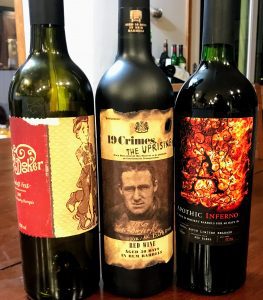
Can’t argue with success even if it is not your cup of tea.
Even trends that start out on a craft level soon get co-opt and commercialized like how making cider from red-fleshed heritage apples became
the latest rosé trend. The rye whiskey heritage that pre-dates the Revolution is now “marketable” with the big boys like Jack Daniels, Woodford Reserve, Wild Turkey and Jim Beam hopping on the rye wagon and expanding their portfolios. Patron and Jose Cuervo have their eyes set on the Mezcal market.
And let’s not even get started with what’s become of the sour beer and hazy IPA segments.
But c’est la vie.
If there is a dollar to be made in the beverage industry, somebody will be there to make it.
In vino veritas
Like wine, there is truth in innovation and if history has taught us anything over the course the 10,000+ years that humans have been consuming alcohol it is that we do like a little variety in our tipple–even if that variety is pumpkin spiced flavored.

Y’all know its only a matter of time till Apothic PSL comes out, right?
To that extent, I’ll set aside my cynicism to look at Wine Enthusiast’s list and highlight for you some of the folks whose stories I’ve found spark just a bit of hope in my world weary heart.
Maggie Campbell – President/Head Distiller, Privateer Rum; Board of Directors Vice President, American Craft Spirits Association
A female head distiller who has a WSET diploma and is pursuing a Master of Wine certification? Badass! My wife is from the Peabody/Salem, Massachusetts area which is a short drive from Privateer Rum in Ipswich so the next time we’re visiting family back east, I’m definitely putting this distillery on my “Must Visit” list.
Paul Elliot — Founder, Loft & Bear
In all honesty, the vodka industry has been something of a joke the last couple decades with flavors and marketing holding more sway than quality and craftsmanship. I have to tip my hat to the small craft distilleries who try their best to forge a living in this category. While the whiskey, gin, rum and tequila categories have their Goliaths, those mediums at least give the Davids a few rocks of opporunities to differentiate themselves with their ingredients and aging. That’s a tougher task in the craft vodka segment.
Kudos to Elliot and Loft & Bear which not only wants to stand out from the pack but also wants to give back through their charity commitments.
Jim Fischer and Jenny Mosbacher — Co-winemakers, Fossil & Fawn

Admit it. You can see Treasury Wine Estates coming out with a “Living Amphora” series of Natural Wines at some point.
While I haven’t always been enthralled with the quality of natural wines, I do respect the commitment and passion behind the people who make them. I haven’t had a chance to try Fossil & Fawn yet but, being Pacific Northwest neighbors, I’ll certainly make an effort to seek them out when I’m in the Portland area.
But, and I’m going to let my cynicism slip in here, I do think that the moment when the Natural Wine Movement has made it will be when wineries like Fossil & Fawn start getting gobbled up by mega-corps like Constellation Brands (a la AB InBev’s mad buying spree of craft brewers).
It will be both a sad and triumphant time for the Natural Wine Movement but I’ll raise a glass and hope that folks like Fischer & Mosbacher still stay part of La Résistance and can make a healthy living doing so.
Maya Dalla Valle – Director, Dalla Valle Vineyards
Dalle Valle has been one of the few Napa “cult wines” that I’ve believed have been worth the hype. It is heartening to see the vineyards still stay in the family and that rather than resting on her name, Maya has gone out into the world to gain real experience at wineries across the globe.
Jésus Guillén — Owner/Winemaker, Guillén Family Wines; Winemaker, White Rose Estate
The last few times I’ve had White Rose wines from the Dundee Hills, I’ve been impressed. Learning about Guillén’s story gives me reason to explore these wines more as well as his own family estate wines.
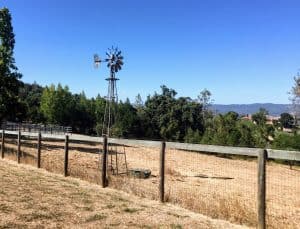
The windmill that is featured on many of the Long Meadow Ranch wines is still holding the fort on their Mayacamas property overlooking Rutherford.
— Proprietor/Chief Operating Officer, Long Meadow Ranch
Long Meadow Ranch has been one of my favorite Napa estates for a while. Such an under the radar gem with a great winemaking pedigree that began with the legendary Cathy Corison and now features Ashley Heisey (previously of Far Niente and Opus One), Stéphane Vivier (previously of Domaine de la Romanee-Conti’s owners’ California project–Hyde de Villaine) and Justin Carr (previously of Cakebread, Rudd and Hourglass).
But visiting the estate a couple years ago as well as their delicious farm-to-table restaurant really hit home for me the Hall family’s commitment to sustainability and the environment.
Jonathan Hajdu — Winemaker, Covenant Wines
I’m not Jewish but I’ve listened to many Jewish friends over the years lament about the poor selection and quality level of many kosher wines–especially those that are mevushal which are flash pasteurized so they can be handled by non-Jews.
While I know that there are quality minded producers in Israel and abroad making kosher wines, their small productions and the hurdles of importation limits their access to US consumers. Being based in Napa and Sonoma, Covenant Wines does have the potential to fill in a sorely needed niche. It never hurts when you have fruit sources like Rudd’s Oakville Estate and Mt. Veeder vineyards!
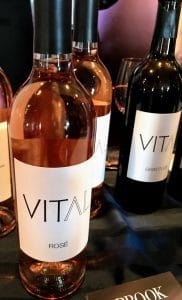
Their limited production will make them hard to find outside the Pacific Northwest but if you get an opportunity to try Trout’s VITAL wines, take it.
Ashley Trout — Owner/Winemaker, Brook & Bull Cellars; Head Winemaker, Vital Wines
I’ve been a fan of Ashley Trout since her first project, Flying Trout Wines which is now owned by TERO estates. Recently I was really impressed with her VITAL rosé at the Walla Walla Valley Wine Alliance tasting earlier this year which I documented in my Walla Walla Musings post.
The entire VITAL project is super cool and worth supporting with all the profits from the wine label going to the SOS Clinic of Walla Walla that provides healthcare for under-served members of the community–including many vineyard workers and their families.
I was wondering why Ashley Trout was pictured in her Wine Enthusiast photo op drinking Duckhorn wine until I read that she is married to Brian Rudin the winemaker of Duckhorn’s Red Mountain project, Canvasback. They have two kids who have likely inherited some really good winemaking genes.
Katarina Martinez — Owner/Head Brewer, Lineup Brewing
While no industry is immune, the beer industry has had a lot of light shined recently on the rampant sexism that women working in the industry face. There is even a website called Beer & Sexism which documents stories of women brewers and employees with experiences that range from mild (but thoroughly annoying) mansplaining to severe sexual harassment.
There is no universal blessing bestowed on women that means they’re going to make better beer but with women brewers representing only around 10% of the industry, its worth going out your way to support the underdog.
While it will probably be tough to find the New York-based Lineup Brewing on the West Coast, I’ll keep an eye out for Martinez’s brews.
Krista Scruggs — Vigneronne, Zafa Wines
This entry had me raising an eye brow and going “Whoa!”. Scruggs with her Vermont-based Zafa Wines is experimenting with co-fermenting wine grapes with farmed and forage apples as a sort of a wine-cider hybrid project that sounds crazy cool.
I have no idea how easy her stuff is to find but its worth the search to find what Scruggs describes on her website as “JUST FUCKING FERMENTED JUICE FROM RESPONSIBLY FARMED LIVING FRUIT.”
Jeff Lindsay-Thorsen — Winemaker/Co-owner, W.T. Vintners/Raconteur Wine Company; Wine Director, RN74
I don’t hide my affections for W.T. Vintners’s wines like their delicious rosé and very Old Worldish 2015 Boushey Vineyard Rhone blend that beat out (for me) the 2014 Sadie Family Columella (which was nearly 3x the price) at this year’s Washington vs World Blind Tasting Event. Plus, the food and wine experience at RN 74 in Seattle is second to none.
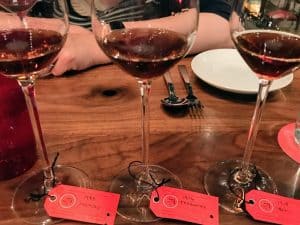
This Madeira flight at RN74 featuring (left to right) a 1988 Malmsey, 1976 Terrantez and a 1948 Bual (!!!) is among my Top 10 lifetime wine moments for sure.
That said, I’m still a bit skeptical at how much influence winemakers and sommeliers have in the bigger scheme of the industry. Yeah, they can make great wine and put together a great list but for the majority of wine drinkers who are picking up a bottle of wine at the grocery store or Costco to take home for dinner, they’re more apt to be swayed by fancy packaging than by “terroir-driven, single-vineyard wines.”
Sorry, my cynicism is leaking out again.
Kelli White — Senior Staff Writer, GuildSomm
For me, personally, I will have to say that Kelli White has been the one figure on this list who has actually influenced my tastes and approach to wine. Over the last year since I’ve discovered her work on GuildSomm, she has become one of my favorite wine writers.
I’ve learned so much from her with this just being a small sampling of some of her outstanding work.
The Devastator: Phylloxera Vastatrix & The Remaking of the World of Wine
The Evolution of American Oak

The root of my Xinomavro obsession of late.
Gods & Heroes: Xinomavro in Northern Greece
Brettanomyces: Science & Context
Major Maladies of the Vine
The GuildSomm website is worth bookmarking just for her articles alone.
Hannibal ad portas
These next listings are probably the most realistic inclusions on Wine Enthusiast’s list because these folks actually have the position and power to influence the market in substantial ways.
Neil Bernardi – Vice President of Winemaking, Duckhorn Wine Company; General Manager, Kosta Browne
Duckhorn has grown immensely from it founding as a small Napa winery by Dan and Margaret Duckhorn in 1976. It’s becoming a large mega-corp in its own right with a portfolio of brands that includes Paraduxx, Goldeneye, Migration, Decoy, Canvasback, Calera and Kosta Browne. This is a story not that far off from that of Ste. Michelle Wine Estates which started as a small Washington winery and now has a portfolio that includes more than 26 brands like 14 Hands, Columbia Crest, Erath, Borne of Fire, Northstar, Spring Valley Vineyards, Conn Creek, Patz & Hall and Stag’s Leap Wine Cellars.
Duckhorn’s growth is on a steep trajectory and I don’t see their strings of acquisitions slowing down. A big question, especially as they acquire more vineyards and contracts, is whether they will continue to keep their brand holdings in the upper premium range or expand more of their value offerings like Decoy.
Katie Jackson — Vice President of Sustainability and External Affairs, Jackson Family Wines

Vineyards outside Kendall-Jackson’s Wine Center in Santa Rosa.
Yeah, Jackson Family Wines is huge with over 30 brands in California (including La Crema, Siduri, Brewer-Clifton, Byron, Cambria, Freemark Abbey, Cardinale and Copain), a growing presence in Oregon (buying Penner-Ash and Willakenzie among others) as well as wineries across the globe. They make (and have no problem selling) more than 3 million cases a year of their Vintner Reserve Chardonnay.
That translates to a lot of influence and sway in the industry so it is heartening to read about Katie Jackson’s effort to promote sustainability across her family’s empire including the public release of sustainability reports. Just a few days ago it was announced that more than three-quarters of the company’s vineyards (which includes 12,000 acres under the Kendall-Jackson label alone) are certified sustainable.
That’s a significant needle mover that will certainly have a long term impact on not only the wine industry but on the health of the environment as a whole. While I can often be dour on large wine companies, I have to sincerely applaud Katie Jackson and the Jackson family for these efforts.
Maybe there is hope for my cynical heart yet.
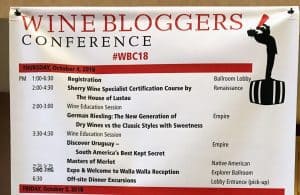
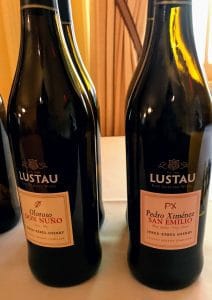













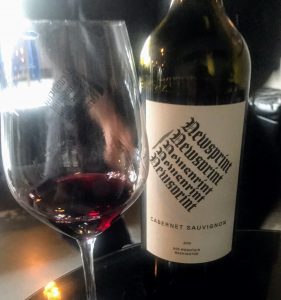 A few quick thoughts on the 2015
A few quick thoughts on the 2015 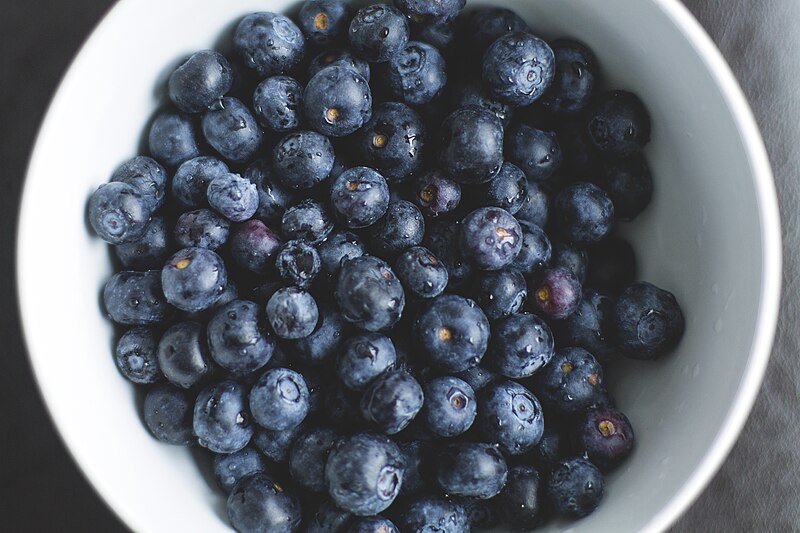
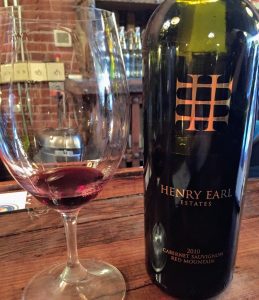 A few quick thoughts on the 2010
A few quick thoughts on the 2010 